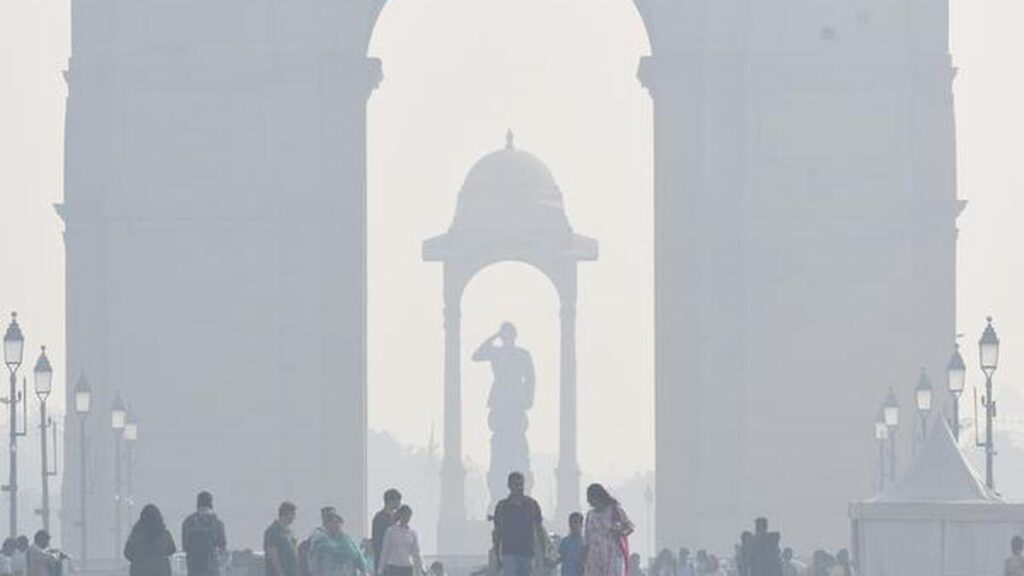Link Found Between Air Pollution and Type 2 Diabetes in Chennai and Delhi
Two recent studies published in international journals have uncovered a concerning connection between air pollution levels and the prevalence of type 2 diabetes in the Indian cities of Chennai and Delhi. While the link between air pollution and diabetes has been established in Western countries and China, these studies highlight that the association holds true in urban India as well.
The cities of India have consistently ranked high on lists of locations with the worst air quality, with pollution levels often exceeding the limits set by the World Health Organization. The latest research on this matter is part of the Centre for cArdiometabolic Risk Reduction in South Asia (CARRS) Surveillance Study. The study involved 6,722 adults in Chennai and 5,342 in Delhi, tracking their health through questionnaires and blood samples.
Findings of the Studies
Using data collected from 2010 to 2016, the researchers examined fasting plasma glucose (FPG) and glycosylated haemoglobin (HbA1c) levels at specific intervals. They also developed air pollution and exposure models utilizing satellite data and emissions inventories.
The results indicated that a 10 μg/m3 (micrograms per cubic meter) difference in annual average PM2.5 levels could be linked to a 9-36% higher risk of developing type 2 diabetes. The researchers concluded that the association between type 2 diabetes and air pollution is not solely due to intermittent high pollution episodes but also extended exposure to ambient PM2.5 levels.
In Delhi, for every 10 μg/m3 increase in PM2.5 levels per month, FPG increased by 0.21-0.58 mg/dL (milligrams per deciliter) and HbA1c increased by 0.012-0.024. In Chennai, FPG increased by −0.36-1.39 mg/dL and HbA1c increased by 0.01-0.06. Over a six-month period, a 10 μg/m3 change in PM2.5 levels resulted in a doubling of both ranges in Delhi, but no statistically significant result was found in Chennai.
Furthermore, the paper published in BMJ Open Diabetes Research & Care revealed that hypertensive participants in Chennai were more susceptible to developing type 2 diabetes when exposed to long-term PM2.5 levels. Conversely, younger participants in Delhi were found to be more vulnerable to developing the disease. These findings shed light on the relationship between ambient PM2.5 levels and internal processes.
Understanding the Link Between Air Pollution and Diabetes
Prior studies have demonstrated that exposure to PM2.5 can lead to vascular insulin resistance and inflammation caused by oxidative stress. The research suggests that any condition involving oxidative stress may exacerbate the harm caused by PM2.5 exposure.
Another study published in the journal Hypertension established a strong temporal association between high levels of ambient air pollution, elevated systolic blood pressure, and incident hypertension.
Implications for Public Health in India
India already faces a significant burden of noncommunicable diseases, accounting for 64% of the national disease burden in 2021. Poor air quality’s impact on respiratory and heart health has raised concerns about a public health crisis. Recent research has also revealed the diverse effects of air pollution in various aspects of life.
For instance, a study published in The Lancet Planetary Health in 2021 estimated that a 10 μg/m3 increase in PM2.5 exposure could raise the risk of pregnancy loss by 3% in India, Pakistan, and Bangladesh.
These findings emphasize the urgent need to address air pollution as a public health priority in India. Implementing effective measures to reduce pollution levels can mitigate the risk of developing type 2 diabetes and other associated health conditions. By prioritizing clean air initiatives, India can safeguard the well-being of its citizens and work towards a healthier future.


